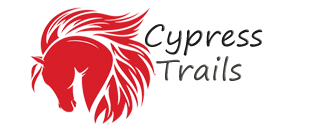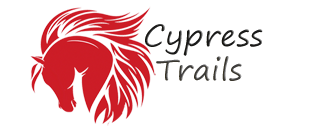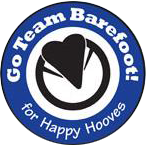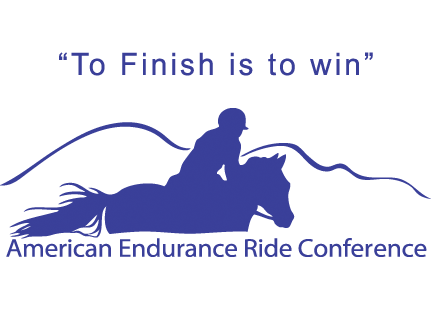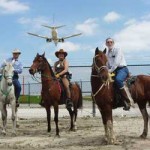I was recently approached about consulting with a dressage stable owner and his plans to purchase an eight year old Swedish warmblood mare that had been diagnosed with navicular syndrome. He was interested in just using her as a brood mare since she was approaching “middle age” and the lameness problem was “incurable”. I was informed that her fantastic breeding and records in the show ring would likely make her foals highly desirable. The previous owner was selling the mare because she was unable to afford the necessary surgery that the mare needed to remain sound and usable. Her veterinarian was planning on performing a digital neurectomy on both front lower legs of the mare and has been in touch with this potential new owner about following through with the necessary procedure. This stable owner decided to purchase this unsound eight year old mare at a much reduced price, and has been in consultation with me from the time she stepped foot on his property. This was six and a half months ago. He has also been in contact with the referring veterinarian over this time and has kept her informed of our progress in treating this mare for her diseased front feet.
One of his original questions for me before I met him or this mare, “Crystal”, was as follows:
He writes in his email, “I’m hoping you can help me out. I’ve just purchased a broodmare with navicular. Would it be possible for you to provide me with some information before breeding this mare? I looked at the x-rays with the previous vet and she suggesting cutting the nerves on this mare and didn’t understand why the previous owner hadn’t done it sooner. What are the pro’s and cons of this nerve cutting? Thank you for your time.”
My response to him four months ago was as follows, and with his permission I am sharing this information with any and all of you who would like to explore with me what has traditionally been happening with these horses and why it is high time we reevaluate the way we think about and treat these very common hoof problems:
The procedure you are referring to is known as a “neurectomy”. It is generally performed on horses that have had chronic pain problems in their feet, most notably “navicular” problems. The horse is put under general anesthesia and the digital nerves on both sides of the lame leg AND the more sound leg are isolated and cut–most often a section of the nerve on both sides is removed and the ends “capped” with the leftover nerve sheath. The reason that both legs are surgicated is because most horses end up quite lame in the leg opposite the originally lame one if it is left intact. Thus, one can easily appreciate that even though a horse only shows lameness in one of the forelegs, both are affected in a horse with “navicular” disease or “navicular” syndrome. The result of the surgery is that the horse loses sensation from this point downward and is unable to feel the pain from the diseased foot anymore. Usually the limping that was due to the pain in the area goes away and the horse can continue to be used. The horse is thus returned to “soundness”.
This procedure costs anywhere from $250 to $1500 depending on where it is done and who does it. It is “effective” for around one to two years–sometimes not that long, sometimes longer, but all of these horses eventually regrow some nerve connections and regain sensation of the area that was originally desensitized. The lameness then returns and the procedure can be repeated at that time to keep the horse sound.
As you can easily see, this procedure addresses only one thing for the horse and the owner: the head bobbing lameness.
There are some very real and potentially devastating negative side effects of digital neurectomies in horses. Often times the raw ends of the nerves become irritated to the point of developing extremely painful nerve tumors called neuromas, leading to further surgeries to remove them. Other times, the digital arteries and veins that lie immediately parallel to the cut digital nerves become scarred and the resulting stagnation of circulation leads to foundering of the worst degree. Localized infections, scarring of tendinous and ligamentous structures and unsightly swellings are also common. Thus, a procedure designed to provide temporary relief from a widely misunderstood type of lameness often leads to further pain, loss of use and early death for these affected horses. Performing these surgeries is severely disruptive to the horse’s lower leg anatomy, physiology and energy patterns, and commonly leads to irreparable damage.
“Navicular” problems, often referred to as “heel pain” or “caudal heel syndrome” start presenting symptoms in horses as young as two and three years old when their hooves are either allowed to overgrow in to a deformed shape and/or their feet shod at this young age. The still-developing coffin bones and sensitive inner hoof structures are surrounded, constricted and over-pressurized by the progressively-deforming hoof capsules, starving them of vital movement and circulation, yet forcing them to attempt to function and survive in a physiologically stagnant state. Older horses are also plagued by what is termed navicular disease and innumerable other hoof problems when their hooves also succomb to deformities in structure and stagnation of function. These lamenesses occur after longer periods of what is traditionally thought to be the “best hoof care possible”. When this “best hoof care possible” consists of infrequent trimming and/or shoeing, it is no mystery, but rather a highly predictable and physiologic certainty, that these horses will suffer from hoof deformities and possibly debilitating lamenesses. “Killing me softly” takes on new meanings when it comes to the effects of the steel horseshoe on our equine companions.
Given that all of these “navicular” horses can be shown to have deformities in the outward appearance of their hooves, it would seem logical to direct our efforts towards improving their abnormal hoof form, reversing the trends that are causing these deformities and provide for the horse a situation that promotes good hoof form. Cutting the digital nerves in these horses provides absolutely nothing that is honesty therapeutic for them. It is a medically unsound procedure, but it is prevalent in our modern day “use and abuse” philosophy of keeping horses going–doing this in a day and age where we now have an excellent understanding of why these horses end up with “navicular” pain is totally unnecessary and irresponsible–there are no sound medical reasons to perform these nerve surgeries with the reckless abandon they are. These procedures are an excellent example of how simple ignorance of proper hoof form and function allows horse owners and their veterinarians to perform them. Terms like “salvage procedure” have become widely used to describe such procedures that prolong the useful life of the animal strictly for the human’s monetary benefit. Addressing the real problems of the deformities in the feet and how to reverse them with proper trimming and lifestyle will win out as the only acceptable alternative for these animals and their human stewards, and the true salvage in terms of the lives of horses will be realized.
Performing digital neurectomies on heel-sore or foot-sore horses promotes further degeneration of the entire lower leg and hooves in these animals, because it disrespects and disallows what the entire animal needs to achieve a more proper hoof form and normal function. Instead of cutting the nerves to a part of the horse’s anatomy and achieving a completely false sense of “soundness”, we are alternatively able to nurture these unsound horses and their deformed feet to attain correct hoof form and thus proper and vital physiologic function. Natural exfoliation, vital mechanical hoof movements, energizing sensation and exquisite protection are just a few of the important functions horses’ hooves need to have, and this is precisely what they achieve with proper hoof care. This leads us and our horses on a direct path to an honest soundness, far outpacing conventional western veterinary medical techniques and promoting the physical and psychological health of the entire horse rather than disrupting a part of the horse’s vital anatomy, which only leads to further deterioration, loss of use and early death.
As it is improperly trimmed and/or shod horses that are the ones affected by “navicular syndrome”, we know that promoting sound, naturally shaped hooves along with adequate movement on firm terrain is essentially a life-promoting and life-saving, honesty therapeutic form of treatment–it is this type of treatment I will prescribe for horses that I tend to, as it is the only treatment that respects the nature of the horse. Drugs such as isoxsuprine, nitrous oxide, nitroglycerin, phenylbutazone and flunixin meglumine do nothing to improve the deformed feet in these affected horses. Eggbar shoes, reversed shoes, special pads, natural balance shoes, wedge pads, impression material, shoes with rails and/or frog inserts or any other artificial appliance attached to the bottom of the horse can not possibly be honestly therapeutic for horses with navicular problems or other hoof ailments. It is a physiologic impossibility; they can only serve to further the deformities and damage to the horses to which they are nailed, perhaps prolonging the development of further, inevitable symptoms until years down the road, but still furthering the damage all the while. There is not a single case of a horse with severe “navicular disease” that has been cured by the application of an appliance to the foot. Cured, and/or sound, would be defined as a horse that is able to walk, trot and run at liberty on their own feet in a soft environment with animation, impulsion and without lameness. It is the promotion of natural hoof form and thus proper hoof function which allows horses to heal from the insults previously afforded them by improper trimming, shoeing and/or lifestyle, and they heal remarkably well if we respect their fascinating anatomy and it’s wonderfully simple physiology. Providing this option to horse owners when they are faced with whether to pay for a “salvage procedure” or provide for what their horse honestly needs is what the natural hoof care movement is about. These are life and death situations for our horses and it saves horses lives every day.
It is ironic that honest, well-intentioned people across the land are spending their hard-earned money on treatments that are making their horses more unsound and more unusable in the long run. Terms such as “therapeutic shoeing” or “corrective shoeing” will soon be exposed for the oxymorons they are, and interested parties such as insurance companies and horse-leasing operations will soon question such practices, and will not stand idly by while shelling out millions of dollars to pay for such appliances and other “treatments” such as neurectomies that only serve to worsen the conditions of the animals to which they are responsible. Alas, this is the age we now live in…an age of transition for ourselves as well as our horses. Our responsibilities are great, the knowledge is there, and it is coming to an area near you.
P.S. “Crystal” is walking and trotting soundly (with animation and impulsion) in the last three weeks of her “treatment” that I have prescribed, and is working with an alertness and vitality that a few short months ago was gone from her life. She lives in a large 50 foot by 100 foot turnout on the far side of the boarding stable property with another gelding that she likes to boss around, has free choice grass hay and mineral, receives a variety of other herbs and vegetables daily and will be foregoing her previously planned pregnancies to go back in to the show ring and jumping circuit in the Spring. The previous owner and veterinarian have so far been uninterested in visiting her in her new setting with her new lifestyle, but twenty other boarders are keenly aware of where this crippled mare was four months ago and where she is headed now…these are the people that have been keeping the previous owner, veterinarian and two farriers updated on Crystal’s progress. I will now be turning over the hoof trimming duties to her new owner, as he has been an excellent student of the hoof under my supervision and has demonstrated a willingness and good ability to groom her much-improved hooves. There are also several other boarders that will continue their hoof grooming classes with me and be taking care of their horses’ feet very soon. He and Crystal will be showing regionally starting in March.
